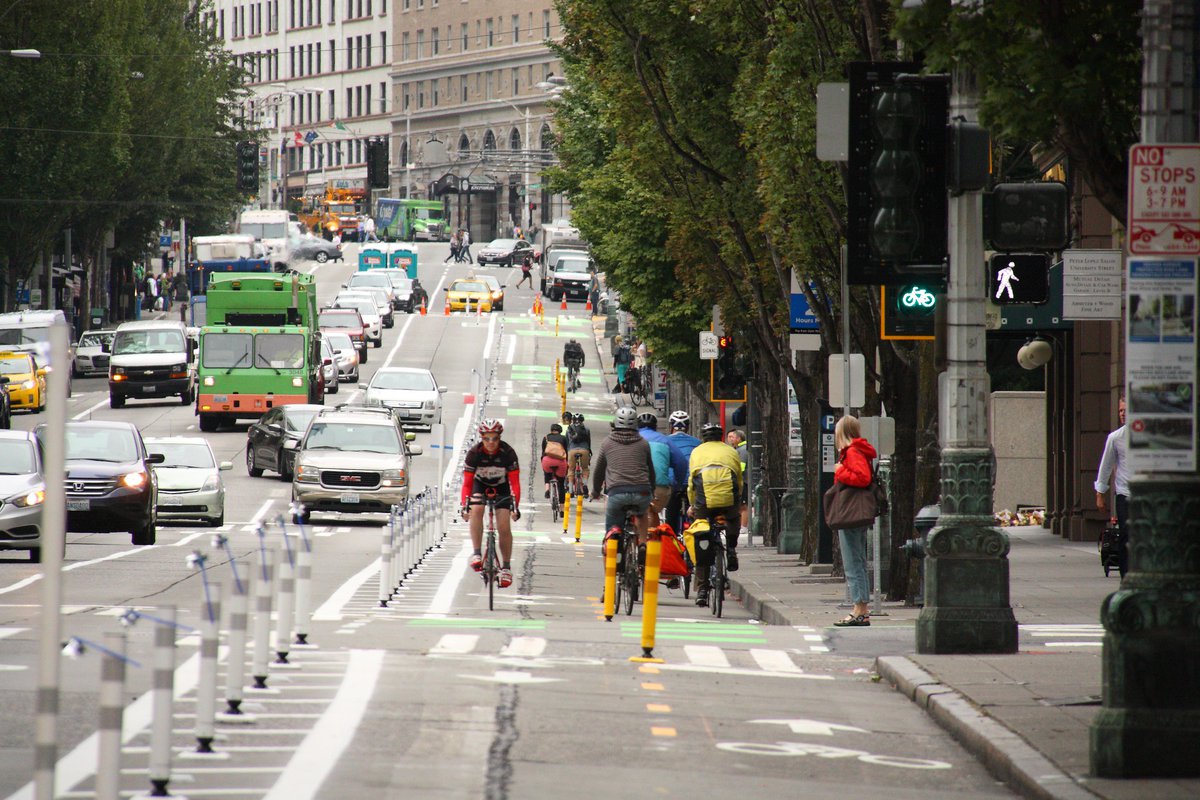Many people will never ride a bike—and that’s fine. But that does not mean we shouldn’t invest in making our cities more bike friendly, because fostering bicycle-friendly cities has benefits far beyond the bike lane.
Bicycles are booming today. Sales of e-bikes (bicycles with an electric-assist engine) are skyrocketing, and cities across the country are doubling down on bicycle infrastructure. It’s a good time to reflect on what bikes can do for us.
Bike-friendly places are safer, more economically productive, more sustainable, and more resilient for all members of the community. When it comes to community change for the better, the bike is the right tool for the job. For those who don’t care about bicycles, or maybe even hate them, let me explain why bike-friendly infrastructure matters:
Bike-friendly streets are safer. American streets are some of the deadliest in the world, particularly for older people and people of color. While it may sound counter-intuitive, adding bikes actually makes streets safer. The presence of bicycles has a calming effect on traffic, and that benefits everyone. Simple investments in basic infrastructure like bike lanes make streets more welcoming to riders, and safer for us all.
Bike-friendly streets build local economies. Most streets in the United States today are not very welcoming. If we can change that, our streets can become places for people to spend time, walk around, shop, and connect. A shift like this would result in economic benefits and higher property values. Local economies benefit from more people out and about, and residents can shop locally, supporting their community. It creates a positive feedback loop of more people, more business, and better places.
Bike-friendly places are more sustainable and resilient. Around 30 percent of U.S. greenhouse gas emissions come from transportation. That doesn’t even include the emissions produced by building and maintaining the miles of roads, parking lots, and other infrastructure that goes into sprawling development. Consolidating the places people want to be into a smaller area means better public transport and the ability to walk or bike—resulting in a more sustainable and resilient community.
Better places benefit everyone. Anyone who can’t, won’t, or would rather not drive benefits from bike-friendly places. The very young, very old, and those with disabilities enjoy the independence, inclusion, and physical activity such places make possible. And remember that driving is expensive. That is why most transit riders are low-income, and cycling and walking are most used by low-income households. Communities that make these options safer and more efficient are an important step to addressing inequities in transport.
A century ago, most towns in America had a Main Street that closely approximated what I am describing. Today, more Americans are likely to pass through the fictional “Main Street, USA” in Disney World than they are to have a fully functional main street in their community. Our streets, and our cities, can change quickly. Bicycles can take us there.
Investing in bike-friendly infrastructure can be a divisive topic, but it doesn’t need to be. Bicycles are just a means to an end, a tool for community change. The goal is making cities better with bicycles, rather than for bicycles.
This column was produced for Progressive Perspectives, a project of The Progressive magazine, and distributed by Tribune News Service.
May 21, 2024
4:35 PM

